Yoga for tennis: optimize performance and minimize risk of injury
7I find it a bit funny that some folks roll their eyes when we talk about energy movement throughout the body in our yoga practice, but have no problem discussing the kinetic chain of energy transference in sports. Let’s look at tennis, for example.
Tennis is a demanding sport that involves a series of complex movements. You need to generate power to propel the ball forward, and it is not enough to use only your arm/shoulder. “The power behind every shot in tennis is generated through a series of body segments or links referred to as the kinetic chain. When your feet push against the court to run, jump or shuffle, energy is created and stored in the first link of the chain, your feet. The power is then transferred in sequence to the major muscles in the remaining links — your lower legs, upper legs, hips, trunk, shoulders, upper arms, forearms and finally to the last link, your hand.” (1)
Both lack of power and body injuries come from interruptions along the kinetic chain. That’s why it’s important to learn proper technique – to make sure that the body parts transfer the energy properly. “Efficient function, with maximal performance and minimal risk of injury, requires optimum activation of all the links in the kinetic chain designed for power. Injury is often associated with alterations in the flow of energy across segments, such that if one segment is removed from the chain, then there is an increased reliance on the others to accommodate this loss, which may lead to tissue overload.” (2).
We pretty much talk about all the same things when we discuss body alignment in yoga poses. We often use the term “energy lines”, but it describes the same principle: different parts of the body need to be organically aligned with one another to avoid injury and facilitate smooth energy movement. The original purpose of yoga asanas was to be “prana pumps” – to move the energy to every nook and cranny in the body and nourish it. If those lines become “kinked” it leads to restrictions in the energy flow; if we rely on some parts more then others we can create compensation patterns that lead to injuries. That is why when we look at yoga poses we need to understand them in their entirety, rather then focus on positioning of isolated body parts (just like we would in tennis).
Today we feature a short yoga practice to prepare your body for playing tennis. It contains large whole body movements mimicking different aspects of the tennis game. Each movement is meant to integrate different parts of the body while emphasizing specific areas that require special preparation. Give it a try and let me know what you think!
Join Sequence Wiz to customize this practice to your liking. Choose your poses, enter the instructions and you are done! See it in action >

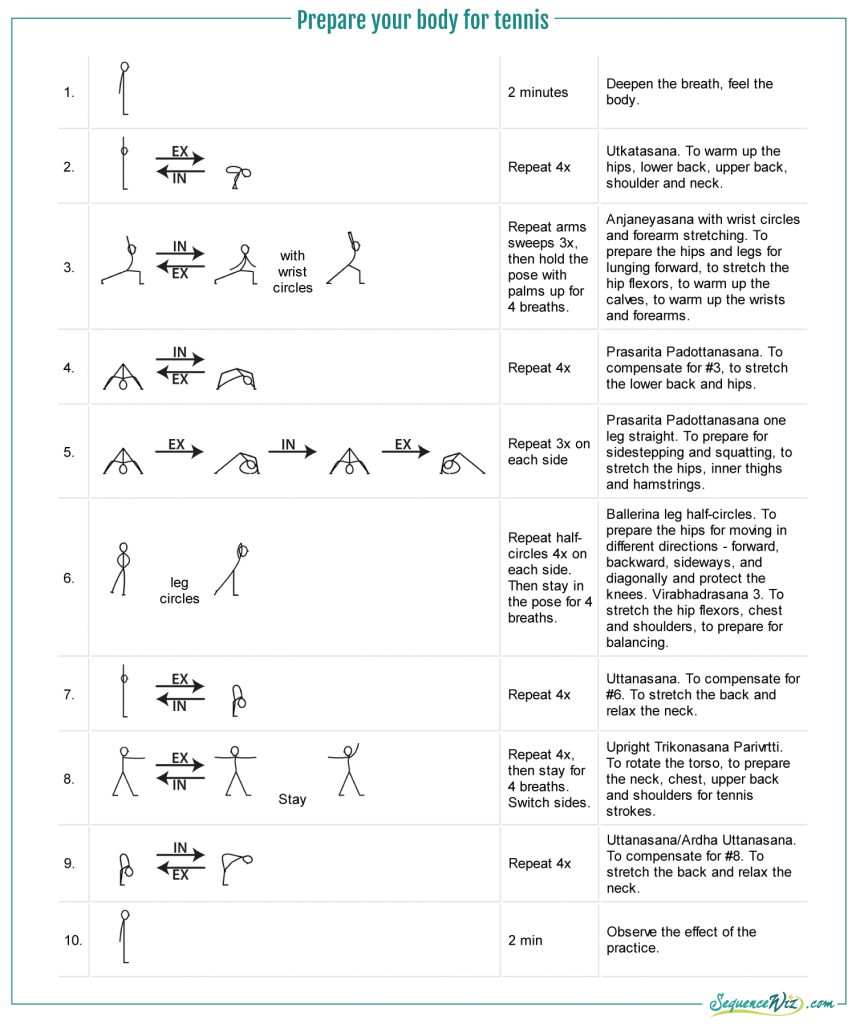

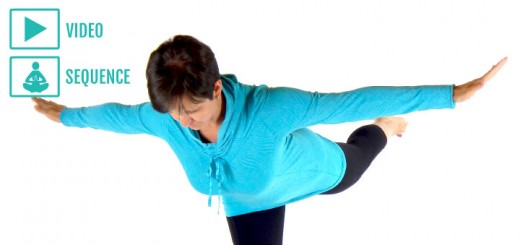
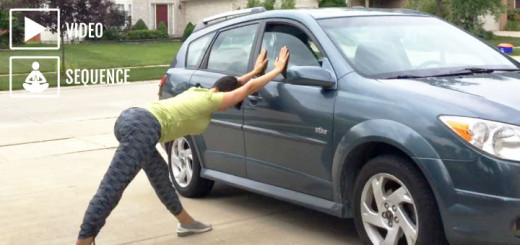
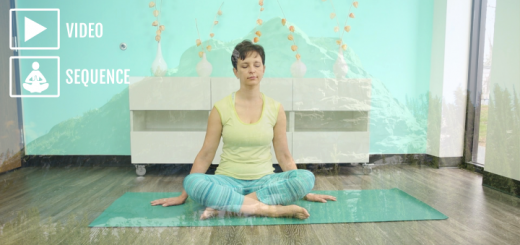
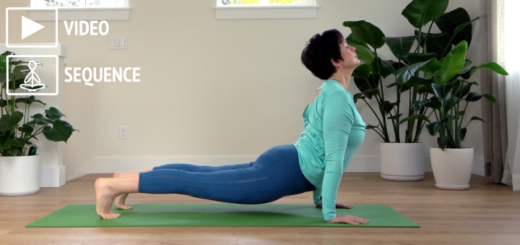















Great practice. #6 was very creative and beneficial. Would love to see a follow up practice to do after playing tennis.
Thanks Olga.
Thank you Sherri! I will definitely do something like that in the future.
I was wondering if you used all standing postures deliberately so it could be used as a preparation on the court, for example? I am playing with the sequence a bit, thinking of adding Vajrasana with turning head and a sweeping arm version of Uttita Trikonasa, mainly because I have a right shoulder (and tendonitis) issue. What do you think?
Love your blog and I hope I will meet you at a Viniyoga function some day soon!
Hi Robin! This is exactly right – I wanted to put together a practice that one can do without a mat, near the court. I find that Vajrasana with sweeps is an excellent idea. Sometimes I just do my magic three first (if I have a mat) and then this practice. Yes, I hope we get to meet in person – are you coming to IAYT conference in June?
Thanks, Olga. Yes, I will be there “(wo)manning the Viniyoga table. Great! Looking forward to meeting you! 🙂
Olga,
This sequence for tennis is outstanding! I am associated with a lot of folks who play and they are continuously injuring themselves from top to bottom, thus limiting their enjoyment of the sport and also of their lives. I will take this to our local club and perhaps do a workshop.
Also, I have the opportunity as a yoga teacher, to work with a wrestling club of young enthusiasts I strongly believe in fostering the educational experience that yoga offers, especially in our young people who will inherit the responsibility of nurturing our state of being on the planet. I look forward to more of your wonderful contributions that nourish us all! Blessings, Lyn
Great! I have been learning and playing tennis for almost five months now. It has been a sport that I instantly fell in love with. I never knew yoga can help me with this sport. Thank you so much for sharing the information!